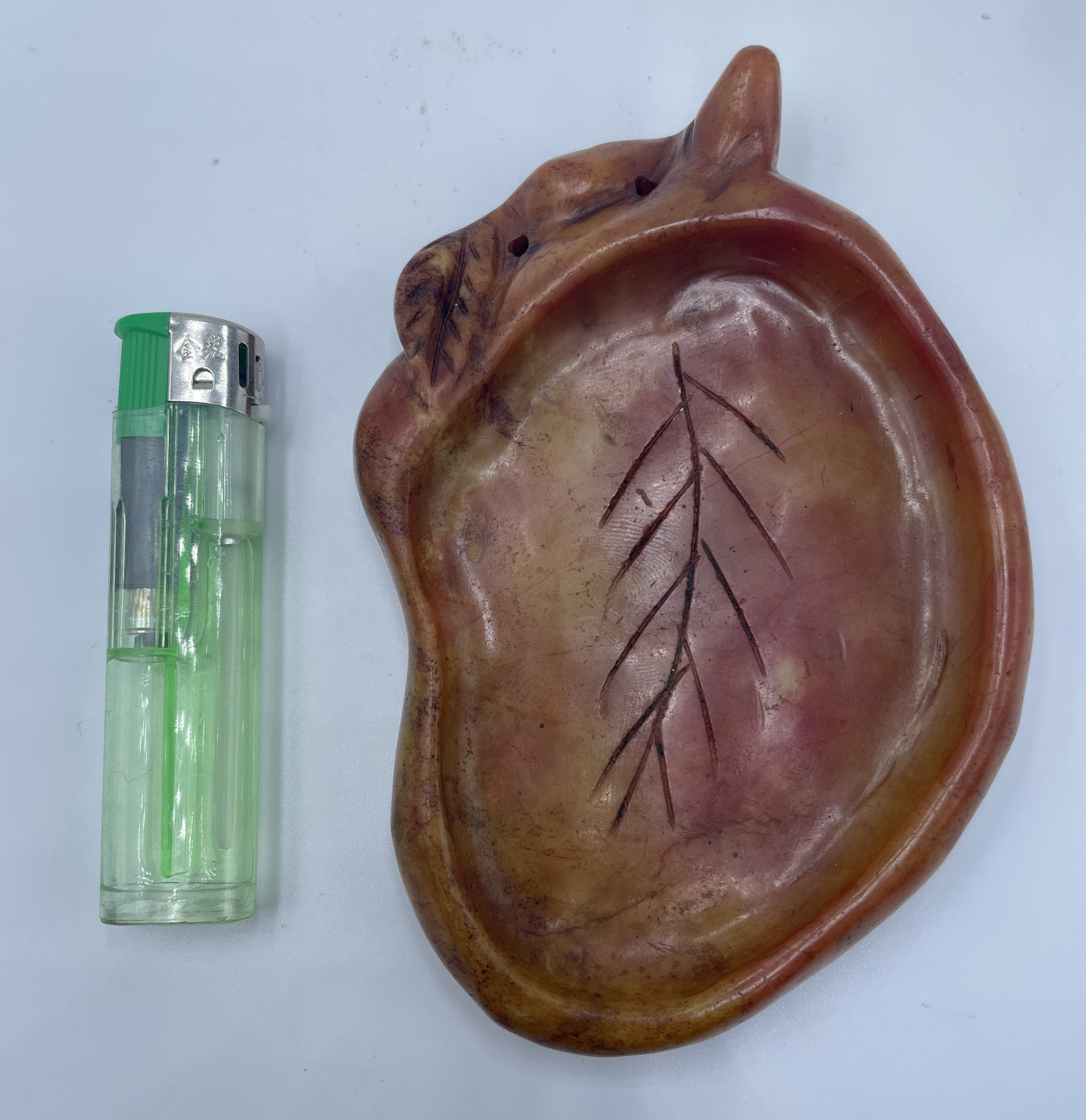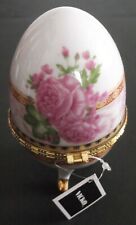When you click on links to various merchants on this site and make a purchase, this can result in this site earning a commission. Affiliate programs and affiliations include, but are not limited to, the eBay Partner Network.
Condition and Grade
Please Judge The Item Condition For Your Self, What You See In The Photograph Is What You China.
Material : Jade
Gross Weight : Approx 160g.
Size : Approx 12.05cm X 9.0 cm x 1.8 cm.
For a traditionally trained Chinese and even many “modern” leaders in government, business and the arts today, the Chinese brush, ink and inkstone used in writing of characters, calligraphy and painting has a much deeper cultural significance than most outsiders would at first appreciate. One of the fascinating and intriguing characteristics of traditional Chinese society is the reverent manner in which a scholar was encouraged to think of all things concerning literature and the library including his writing materials. Over the years numerous rules were developed and popularized in relation to the making of brushes, ink, inkstones and paper. The literature called these four items the “four precious things of the library” and many Chinese even today are taught to give attention to writing of characters in a way very unlike the status of penmanship in this rapidly increasingly technological world.
The Chinese brush is believe to have been invented by one Ming Ti’enin the Third Century B.C. Paper is believed to have been developed at approximately this time although archaeological records show that painting on silk dates from an even earlier date.
The character in Chinese for ink, “mo”, is a combination of two characters, “hei” or black, and “t’u” which means earth. Ink held a fascination for Chinese scholars and there are a plethora of books and treatises on the subject. Some of the classics written over the ages are the “Mo Ch’ing”, which translates as the Ink Classic, which was written in the twelfth century by Chao Kuan-chih. Another is the “Mo pu fu shu” or Handbook of Inkmaking written by Li Hsia-su of the Sung dynasty. Other works written contemporaneously or somewhat later about ink include the “Fang shih mo p’u”, the “Ch’eng shih mo yuan” and the “Mo fu chi yao.”
The chief ingredients of high quality ink according to these works are lampblack and glue. The finest lampblack is supposed to come from the burning of vegetable oils. In ancient times the best soot was made from burning of specially selected pines in an ink furnace that had inverted pottery jars over the smoke. These jars trapped the soot which was then removed with feather brushes. The soot was then mixed with glue, which could be made from horn or animal hides. According to the ink classic, the glue made from the horns of young deer was of the highest quality because of its purity. Good ink depended upon good glue, which gives the ink texture and life.
Because of the laborious process noted above, ink was difficult to make and because of this very expensive. In the tenth century, Li’Ting-kuei of Huichou in Anwei province revolutionized the ink making process so that ink could be made from the soot or lamp black from an oil lamp. This greatly reduced cost and increased availability.
Chinese ink differs significantly from western ink in composition and also in it ability to stand the tests of time. It does not fade to the extent that western ink does when exposed to light and ancient pictures and calligraphy still retain their resilience after centuries of display. Chinese ink in ancient times was sold in solid inksticks or inkcakes, which were most frequently round or rectangular but also often shaped like a canoe. The ink was then ground on an inkstone and mixed with water for use. Ancient or antique inksticks are a collector’s item and are in demand by collectors and fetch high prices at sale. Museums in China and also those overseas collections with larger holdings often have examples of these inksticks, many of which date to the Sung, Yuan and Ming dynasties.
Considering the reverence traditionally educated Chinese scholars had for the brush and ink, their interest in the inkstone was even greater. The inkstone, which was used to grind the ink, was considered the very soul of a scholar’s library. These stones were selected with the greatest of care and were often decorated with elaborate symbols or literary phrases thought to encourage the scholar’s production of higher sentiments. While there are many exceptions, most inkstones are rectangular or rounded. Most are in fact made of stone but examples of pottery also exist. The definitive work on this subject is probably Mi Fu’s “Yen shih” or Account of Inkstones. This work gives the proper name for all portions of the Inkstone and sets out the various characteristics of Inkstones and their use. Later but also fascinating works on Inkstones include the “Yen lin” or Forest of Inkstones by Yu Huai, which was written in the 1600s. This was followed by “Pao yen t’ang yen pien” or Discussion of Inkstones from the Hall of Treasured Inkstones” by Ho Chu’an-yao and “Tuan his yen shih” or Account of Tuan Hi’s Stones by Wu Lan-hsui, both of which were published in the 1830s.
Inkstones are an acquired taste like several other facets of Chinese culture. They are generally black or dark in color and do not draw the attention of the eye. Their beauty oftentimes is not so much in how they look but in how they work together with the ink and the paper and brush to achieve a particular color or texture. However, for those fortunate enough to have learned to master the brush, ink, inkstone and paper, “the four precious things of the library” are a passion. Holding an antique inkstone, it is hard not to feel the power that emanated from the previous painter or scholar who possessed this stone. For this reason, inkstones are avidly collected and treasured by Chinese and some foreigners. Prices vary greatly and are often based on stories as to prior owners, which are difficult if not impossible to verify.
Payment
Payments must be made in 3 days after sale end.
Shipping
We Send All Items Next Day Or Within 2 Days, After That All Depends On Your Location.
Terms Of Sale
Your Responsibility Is To Pay Within 3 Days After The End Of The sale, And Our Responsibility Is To Ship Your Item As Fast As We Can And To Let You Receive The Item In The Same Condition AsShowing In The Leave response As Soon As We Receive the feekdbacks received from your side, If You Are Not Happy With Our Service Contact Us Before You Leave Your response And We Will Always Be Happy To Work With You, responseHelps Everyone On EspeciallyThe Sellers, So Hope You Leave Us A great positive response.
I Have Many Other Items For Sale At The Moment, Please Check Them Out.
Thank You .











